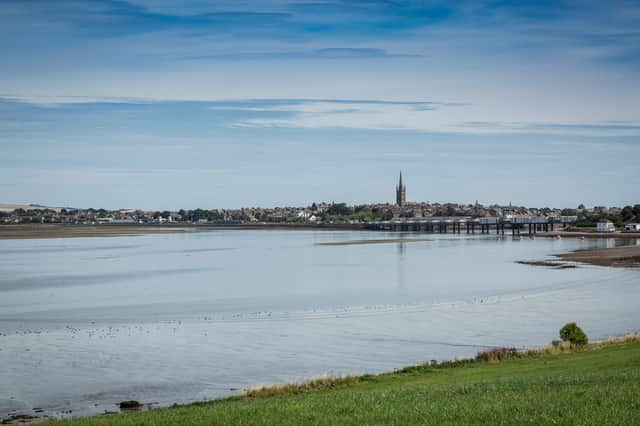Ancient tsunami would 'wipe out' Scottish coastal town if it struck today


Montrose, which has a population of around 12,500, would be destroyed if there was a re-run of the Storegga tsunami, a new study has found.
Researchers from St Andrews and Sheffield University have found that waves of 6.5metres pounded the stretch of coast and then travelled inland for some 19 miles.
Advertisement
Hide AdAdvertisement
Hide AdInland areas sitting up to 11m above sea level are likely to have been flooded given the force of the incoming water.
Although the tsunami is considered to be the largest natural catastrophe to happen in the UK in the last 11,000 years, this is the first time that researchers have been able to model the inland impact of the ancient wave.
Professor Mark Bateman from the University of Sheffield’s Department of Geography, lead author of the report, said:
“Although the Storegga Tsunami has been known about for years, this is the first time we have been able to model how far inland from Scotland’s coastline the tsunami wave travelled by analysing the soil deposits left by the wave over 8000 years ago.
“Though there is no similar threat from Norway today, the UK could still be at risk from flooding events from potential volcanic eruptions around the world, such as those predicted in the Canary Islands.
“These would cause a similar resulting tsunami wave due to the amount of material that would be displaced by the volcano.
"These models give us a unique window into the past to see how the country was, and could be affected again”
A stretch of coast some 370 miles (600km) long was affected by the tsunami that was created in waters off Norway, it has now been found.
Advertisement
Hide AdAdvertisement
Hide AdSeafront areas of Arbroath, Stonehaven, the port areas of Aberdeen, Peterhead and Inverness - including the Beauly Firth - and Wick would all be impacted if the same surge happened again.
The modern-day impact would have graver consequences as a result of denser populations along the coastline and higher sea levels.
The tsunami was caused by the shifting of glacial and interglacial sediments on the coastal slopes at Storegga, along Norway’s continental shelf in the Norwegian sea.
This slide displaced sea water levels and triggered a 95,000 sq km submarine slide that led to the resulting tsunami height reaching up to 30 metres at its peak.
Professor Dave Tappin, of the British Geological Survey, commented on the study. He said: “Thirty years ago, identifying the Storegga tsunami flooding, that struck the coast of eastern Scotland over 8,000 years ago, was seminal in recognising that submarine landslides are a major hazard in triggering significant flood events.
“From the Montrose area, the new detailed analysis of the sediments deposited by the tsunami wave and their age dating using novel methods, together with the new numerical tsunami modelling of the wave impact on-land, provides important new insights into the understanding of the Storegga tsunami flood.
“The research highlights the importance of applying new scientific techniques to older-studied events, thereby improving our knowledge of their impact.”
